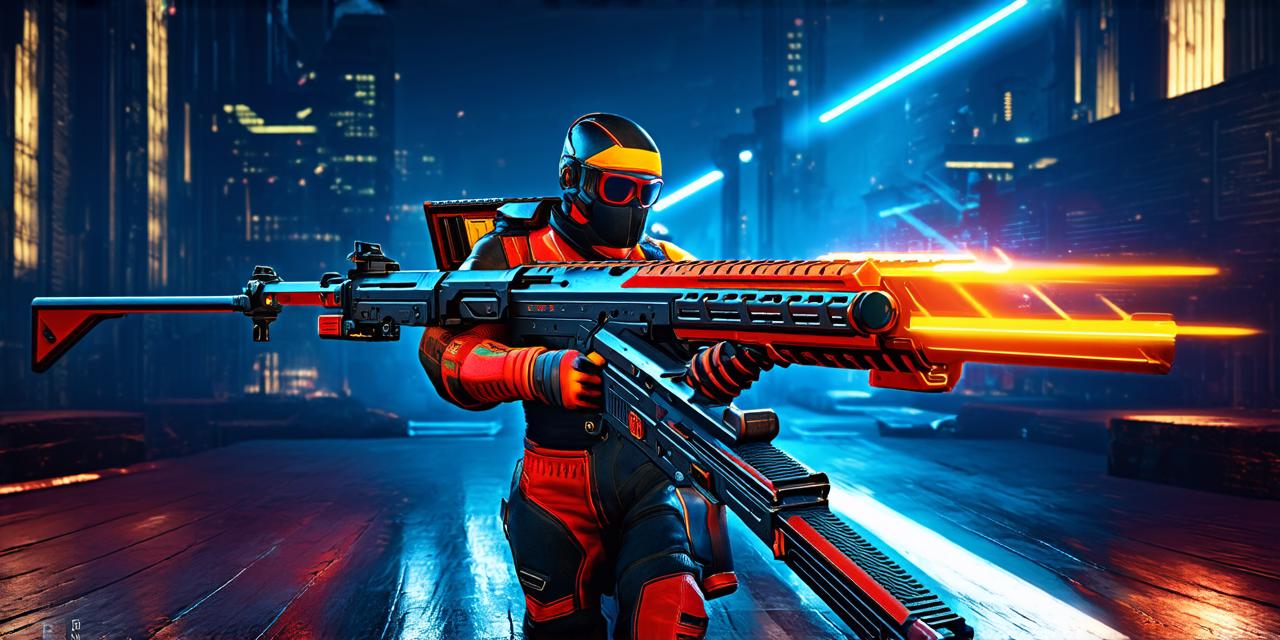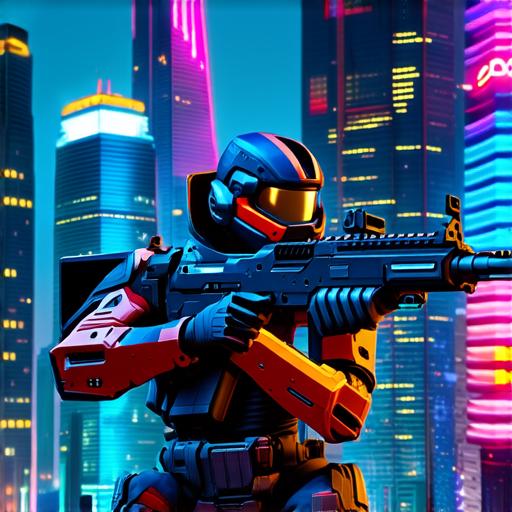
Introduction
Unity is one of the most popular game engines used by developers worldwide. It offers a range of tools and features that make it easy to create engaging and immersive games, including 3D shooter games. In this comprehensive guide, we will explore the steps involved in creating a 3D shooter game using Unity, including best practices and tips to help you get started.
Chapter 1: Setting up your development environment
Before you can start creating your 3D shooter game, you need to set up your development environment. This involves installing Unity and any necessary plugins or tools. Here are the steps to follow:
Installing Unity
- Download and install the latest version of Unity from the official website (https://unity.com/).
Make sure you have the appropriate version of Unity installed for your operating system.
Once installed, open Unity and create a new project.
Installing plugins and tools - Install any necessary plugins or tools from the Unity Asset Store (https://assetstore.unity.com/).
Some popular plugins and tools for creating 3D shooter games include Post-Processing Stack, Photon, and Unity Analytics.
Make sure you have the latest version of these plugins installed to take advantage of any new features or updates.Chapter 2: Creating your game assets
The next step is to create your game assets, including characters, weapons, and environments. Here are some tips for creating engaging 3D shooter game assets:
Using high-quality modeling software - Use a high-quality 3D modeling software like Blender or Maya to create detailed and realistic models.
These programs offer a range of tools and features that make it easy to create complex and intricate models.
Make sure you have the latest version of your chosen software to take advantage of any new features or updates.
Importing models into Unity - Once you’ve created your game assets in your modeling software, import them into Unity using the appropriate file formats (e.g., FBX, Collada, OBJ).
Make sure to optimize your models for use in Unity by reducing their polygon count and texture resolution.
Use Unity’s importer tools to automatically rig your models and create animations based on their movements.
Adding texturing and lighting - Use texturing to add detail and depth to your assets.
Apply different materials to your models to simulate different surfaces, such as metal, wood, and fabric.
Use lighting to create realistic shadows and highlights in your scene.
Experiment with different light sources, such as point lights and directional lights, to create the desired effect.Chapter 3: Designing engaging levels for your game
Designing engaging levels is a crucial aspect of creating a successful 3D shooter game. Here are some tips for designing challenging and immersive levels:
Using a level editor - Use a level editor like Unity’s built-in Level Editor or third-party tools like World Machine to create detailed and varied environments.
These editors offer a range of tools and features that make it easy to place objects, create paths, and add other elements to your scene.
Make sure you have the latest version of your chosen editor to take advantage of any new features or updates.
Incorporating elements for player interaction - Add cover, vents, and ledges to give players multiple ways to navigate the level.
These elements can help players avoid enemy fire and add an element of strategy to the gameplay.
Create obstacles like enemies, traps, and puzzles to keep players engaged and challenged.
Make sure these obstacles are appropriately scaled and placed in the environment to create a sense of realism.
Adding lighting and sound effects - Use lighting and sound effects to enhance the atmosphere of the level and create a sense of tension and excitement.
Experiment with different light sources, such as point lights and directional lights, to create the desired effect.
Add sound effects, such as gunfire and explosions, to make the gameplay more immersive and intense.
Make sure to balance these effects so they don’t become overwhelming or distracting for the player.Chapter 4: Implementing key gameplay mechanics
Implementing key gameplay mechanics is essential for creating a successful 3D shooter game. Here are some tips for implementing these mechanics in your Unity project:
Character movement - Use Unity’s built-in character controller or third-party plugins like Dynamic Rigidbody 2D to create realistic and responsive character movement.
Experiment with different movement styles, such as running and jumping, to add variety to the gameplay.
Add controls for the player to interact with their character, such as aiming and shooting.
Make sure these controls are intuitive and easy to use.
Weapon mechanics - Implement weapon fire, recoil, and spread to make weapons feel more dynamic and exciting.
Use Unity’s particle system tools to create realistic weapon effects, such as explosions and smoke.
Add different types of weapons to give players a range of options to choose from.
Make sure these weapons are balanced so they don’t become overpowered or underpowered.
AI behavior - Create intelligent and challenging enemies by programming their behavior using Unity’s built-in NavMesh or third-party plugins like AI Navigation.
Experiment with different enemy behaviors, such as patrol and ambush, to add variety to the gameplay.
Add different types of enemies to give players a range of challenges to overcome.
Make sure these enemies are appropriately scaled and placed in the environment to create a sense of realism.
Progression and pacing - Use checkpoints, save systems, and level progression mechanics to keep players engaged and motivated as they play through your game.
Experiment with different progression styles, such as linear and non-linear, to add variety to the gameplay.
Add challenges and obstacles throughout the game to keep players on their toes.
Make sure these challenges are appropriately scaled and placed in the environment to create a sense of realism.Chapter 5: Adding finishing touches to your game

Adding finishing touches to your game can help polish it off and make it more professional-looking. Here are some tips for adding these touches:
Adding visual effects

